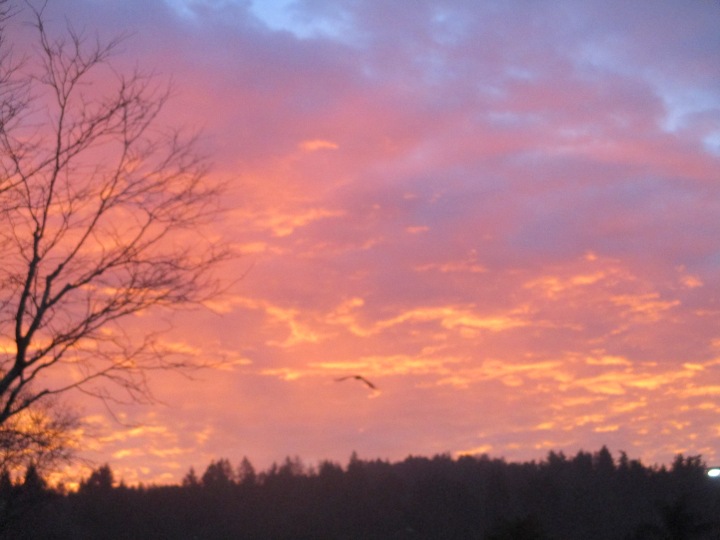 Red sky at morning; sailor take warning. Stormy weather is to be expected.
Red sky at morning; sailor take warning. Stormy weather is to be expected.
Back before modern meteorology, there were all sorts of ways to predict the weather. Some of the ways to know what to expect in the short term were obvious, such as simply observing what was happening off in the distance in the direction from which the weather comes. For the experienced, it is easy enough to feel changes in humidity and temperature in an incoming breeze.
Halos around the moon or sun, as well as the color of the sky at sunrise, provided a bit of insight about what could be expected a bit farther out than the short term. Some techniques were not always accurate, and some were not accurate at all.
Flora and fauna are better at predicting the weather than we are. Horses, dogs and cats get extra fluffy if they expect the winter weather to be colder than it normally is, and they shed early if they expect an unusually warm summer. Sycamore trees are so responsive to the weather that what they are saying about it is not always obvious. Are they browning and defoliating just because the weather got too hot and arid late in summer, or because autumn is going to be extra cool? Experts could tell, but because of modern meteorology, there are not many experts left here.
This red sky over Mount Hermon occurred at sunrise last Sunday, just prior to the storm that finished early Monday morning, and provide picture #6 for my earlier Six on Saturday post. I tried to avoid the streetlamp at the bottom of the right edge. I did not see the bird when I took the picture. The tree to the left is a golden honeylocust.
- Comment
- Reblog
-
Subscribe
Subscribed
Already have a WordPress.com account? Log in now.
Glorious photo!
LikeLiked by 1 person
Thank you. I do not think of taking the pretty pictures. Almost all of mine are simple illustrations for particular topics or specie. When I saw this, I wanted to get a picture so that I could post something pretty like everyone else does.
LikeLike
A beautiful photo. And, as far as plant predictors go, here in Texas we call Leucophyllum frutescens, or Cenizo, the “barometer bush.” It’s well known for blooming a few days prior to a rain, and it’s amazing how accurate it is. I wrote about it years ago, and it’s still my second most-read post. There are a lot of people out there who like a back-up for the meteorologists, apparently!
LikeLiked by 1 person
Yes, I remember that. So may of my colleagues are from other regions where they are more observant of the behavior of the native flora. It is something that we do not do so much here, probably because the flora is not so responsive . . . .and the weather does not give them so much to be responsive about. When the weather gets humid, the sycamores and live oaks drop huge limbs, but that happens while the weather is humid, rather than before. People from New England know what the maples are trying to say about the weather, but there are not many maples here.
LikeLike
Photo takes my breath away. Thanks
LikeLiked by 1 person
You are welcome, and thank you. I do not often get pretty pictures like this.
LikeLike
Great photo, Tony.
LikeLiked by 1 person
Thank you. My pictures tend to be more technical than artistic.
LikeLiked by 1 person
Whatever, Tony, they work for me. Hope you have a great Xmas
LikeLiked by 1 person
You too.
LikeLiked by 1 person
Every now and then, it’s good to preserve a beautiful scene with a photograph. You captured a beauty.
LikeLiked by 1 person
Thank you. I was surprised it came out so well.
LikeLiked by 1 person
Reblogged this on Tony Tomeo and commented:
People complained about the inaccuracy of weather forecasts as long as anyone can remember, even after the invention of satellite imagery. Now that such forecasts are remarkably precise, and describe what is expected to happen every hour of the day for several days into the future, people still complain about something as minor as a discrepancy of half an hour or so.
LikeLike